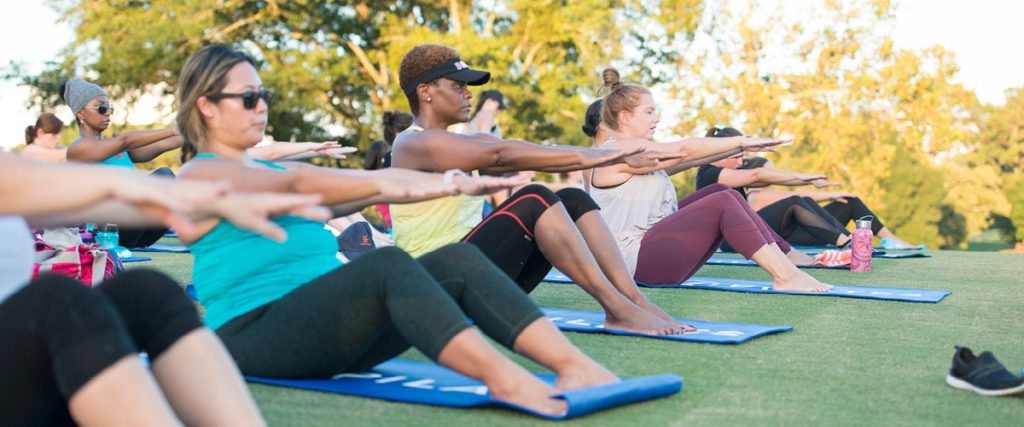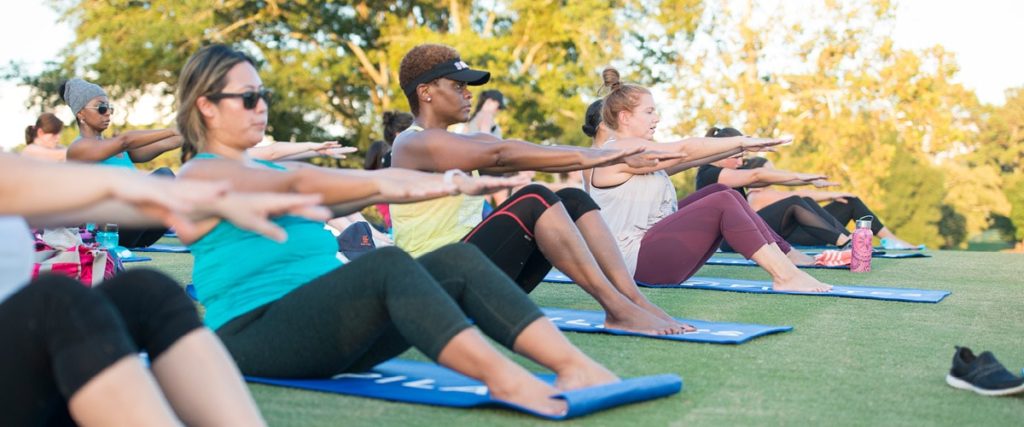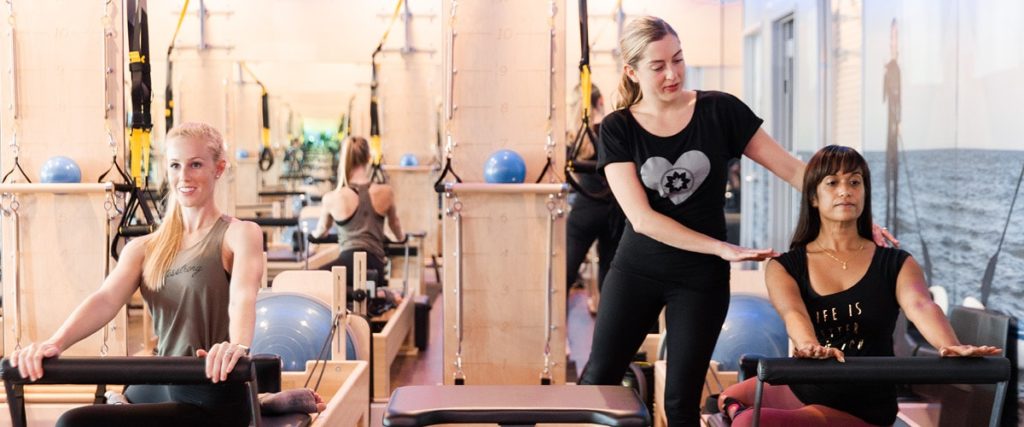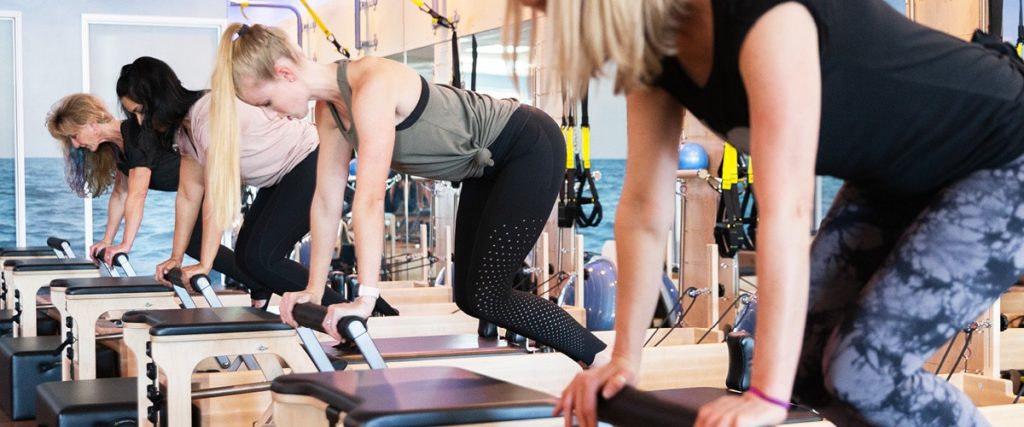There are numerous benefits to both Mat and Reformer Pilates. There are countless similarities between the two, especially when practicing the principles of the work, but there are also some major differences.
MAT PILATES
The motions done on the mat are classical Joseph Pilates exercises that involve control, balance, strength, and focus. Concentrating on how to move your body correctly without assistance is one of the best ways to start your Pilates journey. It’s also imperative to the novice Pilates member on the foundations of where to feel specific exercises. Props can be used as well, but most traditional motions are purely done with the body alone. Learning in this fashion directly coincides with basic day-to-day functions like walking, hiking, or running.
Educating and training our bodies to move correctly by recruiting the proper muscles proves to be extremely challenging while still inviting for the introductory client. It’s a safer starting point versus balancing on equipment, but many people claim that mat Pilates is harder than using apparatus. Allowing mat principles to be a constant part of your Pilates practice enables you to gain your results that much faster and efficiently.
REFORMER PILATES
The Reformer is an amazing way to step up your practice or deepen the concepts of control. The machine can actually assist in certain motions guiding where and how to move. In that way, it’s the perfect beginning apparatus for the first time Pilates person. Reformer Pilates can be individual or group-based and can involve props as well. Since there are options for spring tension and countless exercises that can be done on the Reformer, it’s also a pivotal part of improving any Pilates practice to maintain a diverse repertoire and constant results!
The different levels of spring tension and strap length also invite possibility for modifications for all clients who need assistance or an even greater challenge. This piece of equipment correlates directly to when we push, pull, and carry objects throughout our day. Carrying groceries, opening your car door, or even pushing your child on a swing all involve control and precision that we normally take for granted. Training on the Reformer assists in using stability and strength with the correct muscles versus promoting injury. There are variations that do require further expertise and balance when kneeling and standing on the Reformer. This element of safety should be considered for the newer Pilates practitioner but that’s the beauty of different class levels and well-educated Pilates instructors.
Both methods are beneficial for any skill level. Instead of having a preference for one versus another, it’s actually the differences that promote further Pilates understanding. Learning to move correctly on both the mat and Reformer will only increase your strength level, the efficiency of movement throughout your day, and overall results.
| Try a FREE Intro Class! |







